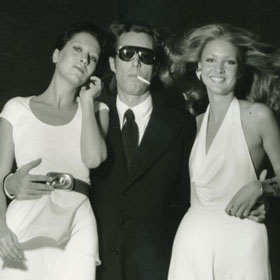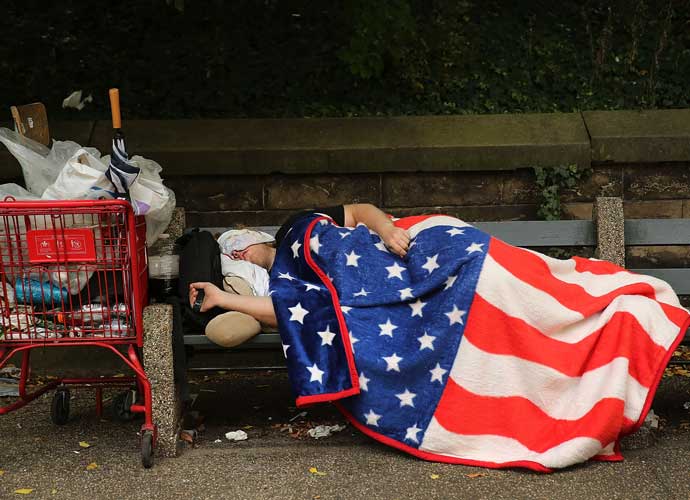Ultrasuede: In Search Of Halston

3/5
Ah, The 70's. The best parts of the 70's were the glamour, the opulence and the overindulgence in places like New York City. In those ways, Halston helped to define the 70's.
He worked hard and he played hard. He designed gorgeous, classic women's clothes that were the epitome of all-American glamour. He got his break when he designed what would become Jackie Kennedy's infamous pillbox hat and three-quarter sleeve suit.
From there, he developed his own line and designed incredibly well constructed, beautiful women's clothing and was known mainly for his dramatic, flowy gowns. He also popularized the fabric of ultrasuede – a fabric that was made of polyester, yet felt incredibly soft and luxurious. All the stars of the 70's wore his clothing, including his closest friend, Liza Minelli.
The film isn't solely about Halston, though. The documentarian, Whitney Smith, is himself a character. Admitting to idolizing Halston from a young age because of the luxurious life he led and how he was constantly surrounded by a bevy of beautiful models (nevermind that Halston, being a gay man, never slept with any of them), he looks like he stepped right out of the 70's himself; with his shaggy hair, leisure suits, aviator shades and 70's cars (which the camera oddly seems to fixate on several times).
Halston was a well-groomed, attractive, dashing-looking man – always wearing his dark sunglasses, with a cigarette hanging out of his mouth and surrounded by a group of strikingly beautiful and thin models, dubbed the Halstonettes. He was very often at Studio 54 – the hottest and most exclusive nightclub in New York during the 70's, throwing lavish dinner parties at his gorgeous NY pad and surrounded by friends.
By the 80's, his kind of style – simplistic silhouettes and lines had fallen out of fashion in favor of big…well, everything. He made a decision that was unheard of at that time, decided to collaborate with lower-end department store, JC Penney (a move that predicted all of the high fashion designers collaborations wit stores like H&M and Target) and created a less expensive line for them. It failed abysmally, and from then on his brand was considered tainted. He foolishly sold the rights to his name to a Playtex owned by Beatrice and was eventually pushed out of his own label. He died at the age of 57 from AIDS-related cancer.
In his quest to get to know and understand the designer, Smith talks to a host of relics of the 70's who knew Halston – his friends and those who worked with him. Many of them are funny characters themselves. Andre Leon Talley, Bob Collacello, the DuPont twins and the rest are all such eccentric characters and give unintentionally humorous anecdotes in their interviews. For instance, Talley bluntly tells Smith he hasn't done his homework well enough, takes control of the interview and tells him to shut up and to just let him talk.
Whitney and the friends of Halston paint a picture of a New York that is long gone. The New York of the 70's where Halston partied in Studio 54, hobnobbed with celebrities, and was constantly surrounded by luxury and wild opulence. It’s hard not to find oneself envious that you weren’t a part of this fabulous time and place. Smith himself is obvious about the fact that he's romanticized this particular era throughout the film and with the way he dresses, and would have loved to have been a part of it.
Halston led an exclusive life of luxury. A life that many, no doubt, admired and envied. And ironically, when he sought to bring his brand that symbolized luxury to the masses with the JC Penney deal, it ruined him. What can we learn from Halston and from this documentary? He lived fast, was cocky and paid the price? Is it a cautionary tale? No, as stated in the film, it's just Halston's tale. And what has become of the world without all these exclusive wild parties, glamour and free love? Well, the AIDS scare helped put an end to that. And society kept changing, and that's the way it goes. Now, arguably, anyone, or most, can have wild parties, luxury and, because of H & M and Target, clothing made by high-end designers. Perhaps their stands the greatest contradiction of the Halston legacy – the clothes, once so elusive and out of reach to all but the wealthy are now available at your local strip mall. Yet, somehow they no longer have that exciting, fresh, scent of high-end originality.
RELATED ARTICLES
Get the most-revealing celebrity conversations with the uInterview podcast!







Leave a comment